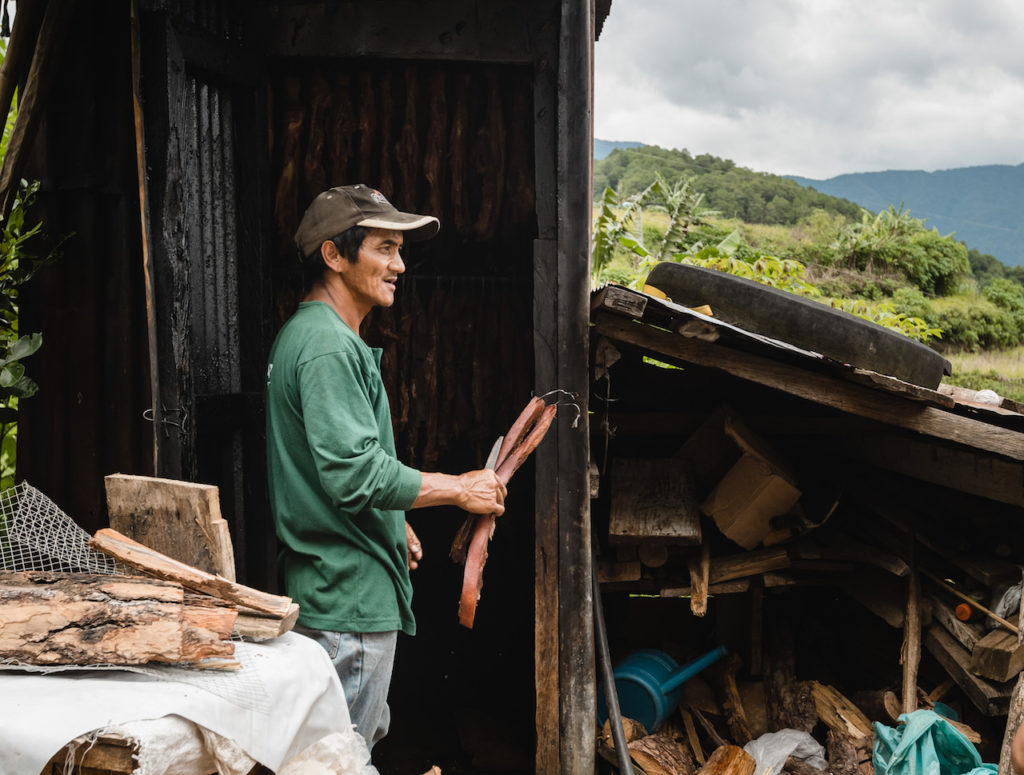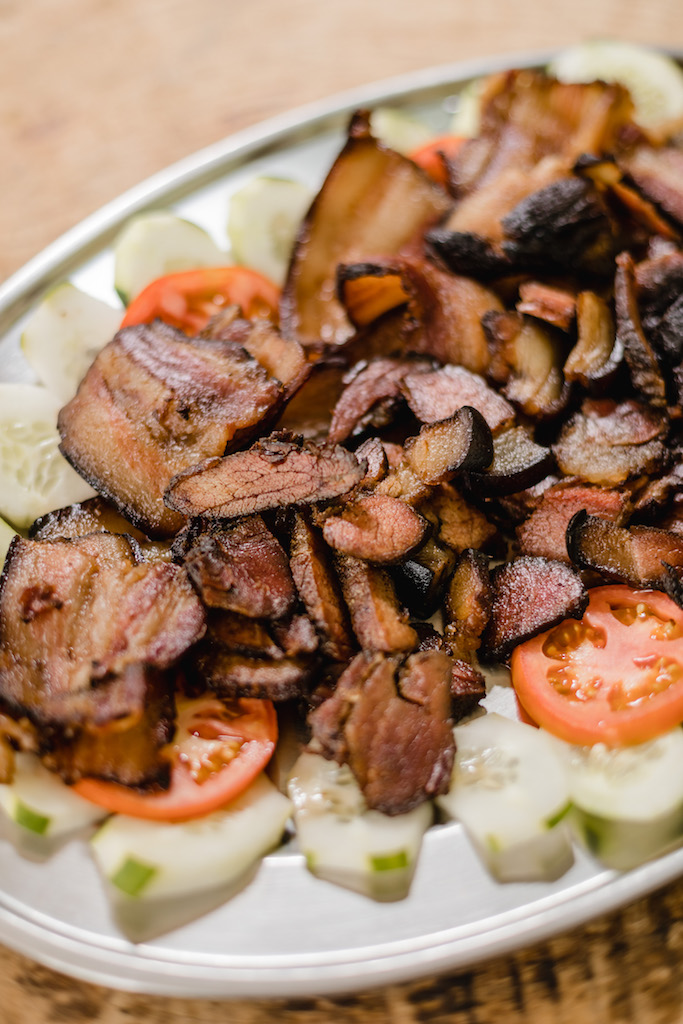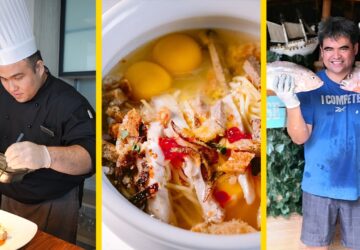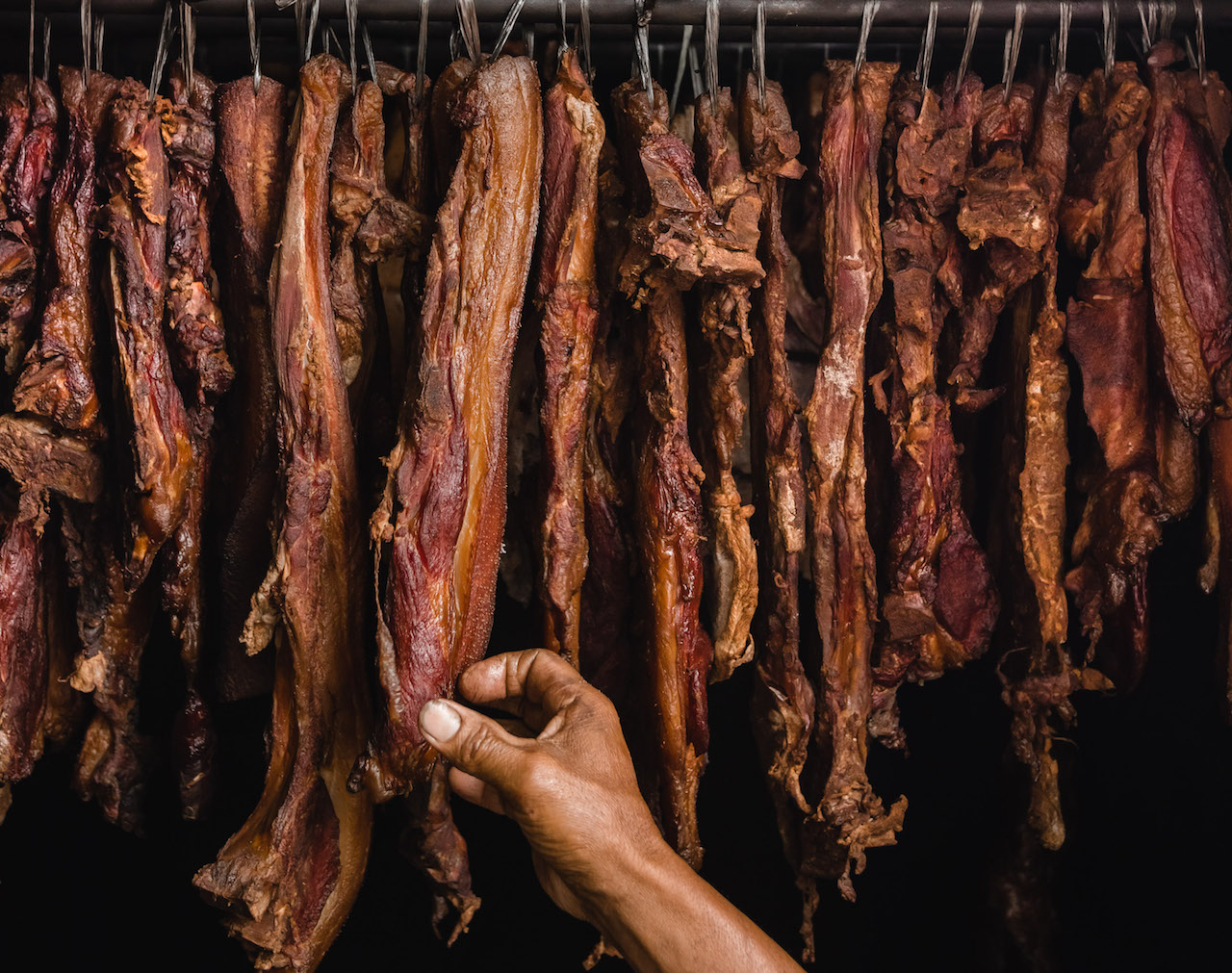It’s an ungodly hour but 50-year-old Leoncio Malidom is already up. He does his best not to make any noise—at the risk of waking up the rest of his family—as he makes his way to the backyard to tend to the etag in his makeshift smokehouse.
In darkness, he grabs just enough pieces of pine wood his frail and weary arms can carry and throws them into the dying fire. It’s a routine he has gotten used to. It has disrupted his sleeping habit, but he wouldn’t trade the chore for anything else as it has been his family’s main source of livelihood for the past seven years.
Sleepless in Sagada
Malidom has given up farming in order to produce etag, a generations-old Sagada specialty. With the rich soil and ideal weather of the Mountain Province, planting myriad fruits, vegetables, and heirloom rice is often the default livelihood of the community. However, Malidom saw a better opportunity in making what people loosely describe as smoked mountain ham. After all, the process is quicker and the returns are promising. Besides, not many locals are doing it for commercial sale, Malidom thought that it would make for better business. “Mas okay ito kasi sa farming maghihintay ka pa ng apat na buwan [bago maka-harvest]. Ito mas mabilis.”

However, the transition wasn’t as smooth and quick as he thought it would be. He is a member of the Kankanaey tribe from whom the etag is believed to have originated from yet he admits to starting everything from scratch. He didn’t learn the craft from anyone. And from what little he knew about the process, Malidom had to go through several trial and error sessions until he was satisfied with what he came up with.
To guarantee the quality of pork, he raises and slaughters his own pigs. He typically feeds his native pigs kamote and banana stalks, and grows them big to yield more weight. The belly, ribs, and face are the most prized parts, he says. After deboning the whole carcass and dividing them into one kilo portions, he proceeds to rub rock salt over every square inch of the meat, then packs them on top of one another in a huge plastic basin. They are allowed to cure, covered, for two days. After which, he pierces the meat with a small sharp knife, ties a string around the hole, and lines them up in a row using a metal rod. The pork parts are then left to hang in his smokehouse for a whole week, requiring him to feed the fire day in and day out. “Tuluy-tuloy dapat ang apoy kaya gumigising ako sa gabi. Dapat diretso ‘yan,” he says. The flavor of the smoked meat depends on the wood used. For his part, Malidom burns a mix of pine, guava, and alnus wood to achieve his preferred taste.
To guarantee the quality of pork, he raises and slaughters his own pigs. He typically feeds his native pigs kamote and banana stalks, and grows them big to yield more weight. The belly, ribs, and face are the most prized parts, he says.
The process of making etag—called panag-etag—may differ slightly when done by others. There are those who rub vinegar on the pork before salting it to prevent flies from swarming on the hanging meat. There are also those who choose to let pork parts dry under the sun for an estimated three hours daily for a whole week.
As a result of his experiments, Malidom knows exactly how much rock salt to use on his etag, making sure that it doesn’t end up too salty. He also prefers his Igorot ham smoked as it ensures longer shelf life compared with the sun-dried variety. After years of production, he can already tell when the pork slabs are ready just by looking at them.
Etag is a hot commodity
When we visited Malidom, there was smoke coming out of the smokehouse located behind his humble home in Barangay Ambasing, Sagada—a telltale sign that he was in the process of making etag. He told us that 200 kilos worth of meat were in the smokehouse.
Once the etag is done, Malidom’s wife Martina will bring half of the batch to the Poblacion Market in front of the municipal hall in time for the weekend market where they are able to sell almost all of the goods for P250 per kilo. The remaining items will be reserved for another week while some portions would be set aside for the family’s meals where the etag is cut into small pieces and thrown into a vegetable stew, mixed with rice, or simply fried and served.
The process of making etag—called panag-etag—may differ slightly when done by others. There are those who rub vinegar on the pork before salting it to prevent flies from swarming on the hanging meat. There are also those who choose to let pork parts dry under the sun for an estimated three hours daily for a whole week.
Some restaurants in Sagada also purchase Malidom’s etag and use them in their dishes. They add it to an Igorot chicken dish called pinikpikan, use it as seasoning agent for soups, and one tourist-friendly shop even offers it as pizza topping.
To date, some families still make their own etag. Akin to making lemon confit, they layer small cuts of pork and salt in a jar and let them cure until ready for use. They easily snip off whatever they need for their home-cooked dishes and store the remaining parts back in the container for another time.
Life support
Many people know etag as a delicacy, but back in the day, it had much more cultural relevance because it was a vital part of rituals. The smoked meat is usually an offering that completes prayers to spirits. It is served during milestones—from the day a member of the tribe is born until he is led to his grave. But those days are gone. And along with these disappearing traditions is the possibility that etag would also be forgotten.

Malidom though is doing his part to preserve the tradition. He may not have inherited the art of making etag from his family but he is firm in passing it on to his children. Luckily, his kids are already involved in the process, helping him with the smoked meat production. Still, the Malidoms are only one of four families making and selling etags in Sagada.
While there are efforts to preserve this age-old tradition, it remains on the brink of extinction. “The best way to understand the culture of a country is through its cuisine,” says former Department of Agriculture Undersecretary Berna Romulo-Puyat. “Ark of Taste, which is maintained by the Slow Food Movement, is designed to preserve at-risk foods that are sustainably produced, unique in taste, and part of a distinct region. We want to revive Filipino heritage food so we can preserve our Filipino culture but also promote the use of ingredients produced by local farmers. Etag, which is on the list, is an important part of the culture of the Mountain Province especially since it is eaten in all their special occasions and rituals.”
For many tourists, etag is simply cured and smoked meat. But for others, it is so much more than that. For Malidom, it’s what’s sustaining his family. For the Kankanaey tribe, it’s essential to their history. And for Sagada, it’s part of its cultural identity.
Originally published in F&B Report Vol. 14 No. 4





